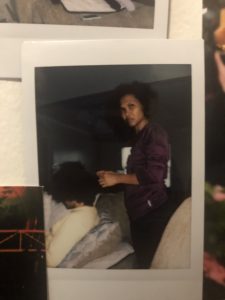For me, Shange’s work is always a bit difficult to read and truly engage with. I find it is often incredibly personal and resonates with me in ways that I am not used to. This week was no different. I was immediately struck by the short blurb after the title.
the roots of your hair / what
turns back when we sweat, run,
make love, dance, get afraid, get
happy: the tell-tale sign of living
Often, our hair is not talked about in this way. It is something that is straightened, relaxed, brushed down into submission. Even though I would say that I am at a point where I definitely have more appreciation and love for my hair (but maybe not so much about all the time it takes to do it), this was still incredibly impactful. To equate nappy hair with natural acts that are a part of everyone’s lives like sweating and running, to joyous moments like dancing and making love, and to even link it to our feelings like happiness and fear not only naturalizes our happy, but celebrates it.
The power that Shange is naming in this part of Nappy Edges is not inherently sexual, but to me it is an erotic power. Lorde classifies and defines the erotic throughout her piece to expand its definition from simply being sexual. She says it is a false belief that “only by the suppression of the erotic within our lives and consciousness can women be truly strong” (53). When I read this, my mind immediately went to the aforementioned part of Nappy Edges. As Shange links Black hair to the idea of living, our hair can be understood both as a literal object that is suppressed by white supremacy, and as a metaphor for how lives, feelings, and actions are taught to be suppressed as well. Lorde dismantles the idea that the erotic should be suppressed and instead argues that it is a form of power, which is very in line with the work Shange does in Nappy Edges and other pieces. Just as Shange and Lorde are able to recognize the power of the erotic, Blackness, and nappy edges, I can also begin to recognize the power in the discomfort I have with Shange’s work, which in itself is a tell-tale sign of living and living as Black.


